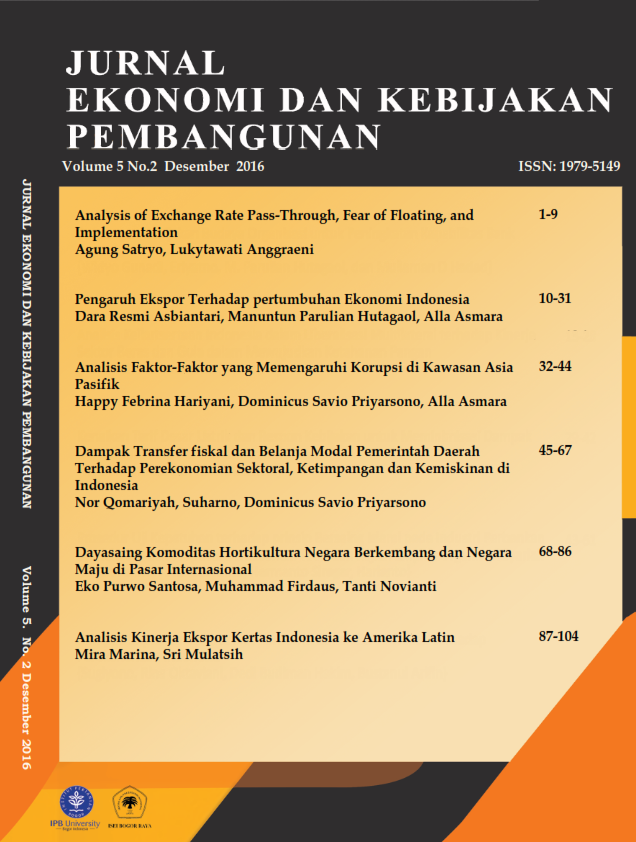ANALYSIS OF EXCHANGE RATE PASS-THROUGH, FEAR OF FLOATING, AND IMPLEMENTATION OF INFLATION TARGETING FRAMEWORK
Abstract
References
Ball C, Reyes J. 2004. Inflation Targeting or Fear of Floating in Disguise: The Case of Mexico. International Journal of Finance and Economics 9:49-69.
Berg C. 2000. Inflation Forecast Targeting: The Swedish Experience [Journal]. Stockholm (SE): Sveriges Riksbank Working Paper Series No. 100.
Campa G. 2006. Pass-through of exchange rates to consumption prices: What has changed and why. New York (US): Staff Report FederalReserve Bank of New York No. 261.
Dilla S. 2014. Exchange Rate Passtrough dalam Konteks Inflation Targeting Framework: Kasus Empiris di 19 Negara di Dunia. Bogor: IPB pres.
Firdaus M. 2011. Aplikasi Ekonometrika untuk Data Paneldan Time Series. Bogor. IPB Pres.
Majardi F. 2000. Dampak Pass-through Pergerakan Nilai Tukar Rupiah Terhadap Laju Inflasi. Jakarta. Ocassional Paper Bank Indonesia.
Nogueira PR. 2006. Inflation Targeting, Exchange Rate Pass-trough and Fear of Floating [Journal]. Econstor.
Pohan A. 2008. Kerangka Kebijakan Moneter dan Implementasinya di Indonesia. Jakarta. PT Raja Grafindo Persada.
Taylor JB. 2000. Exchange Rate Passthrough Effects: A Dissaggregate Analysis Of Colombiaan Impor of Manufactured Goods. Economic Studies. Colombia. Department of the Central Bank of Colombia.
Authors

This work is licensed under a Creative Commons Attribution-NonCommercial-ShareAlike 4.0 International License.
The authors who publis article(s) in Jurnal Ekonomi and Kebijakan Pembangunan have to understand and agree that the copyright of article published is owned by Jurnal ekonomi and Kebijakan pembangunan including to reproduce, distribute and sell this journal to public.





